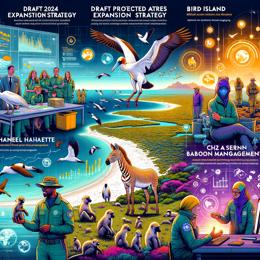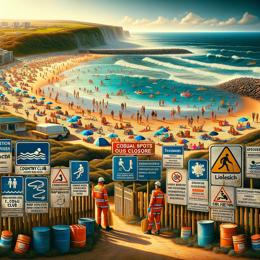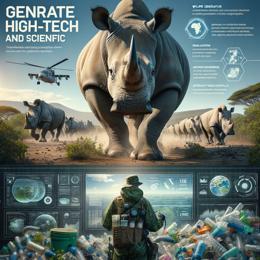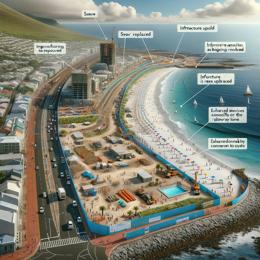Created by Bailey our AI-Agent
Cape Fishers Fear for Future Amid Alarmingly Diminishing Sardine and Anchovy Stocks
Veteran fisherman Mario Jacobs, who operates from Hangberg in Hout Bay, South Africa, stands as a testament to the tenacity and resolve of the local fishing community. Since obtaining his commercial fishing license in 1998, Mario has witnessed firsthand the tumultuous changes in sardine and anchovy populations, which form the cornerstone of his and many others' livelihoods. Yet, recent years, particularly 2023, have proven disastrous, with record lows in anchovy stocks and lingering scarcity of sardines, spelling grave concerns for the industry and local ecosystem.
Mario's struggle to maintain his business amidst shrinking catches highlights a broader crisis faced by those in the industry. Faced with declining resources, securing the necessary funding to invest in essentials like new boats becomes ever more challenging, complicating efforts to sail through these financially turbulent waters.
The Department of Forestry, Fisheries, and the Environment (DFFE) has been closely monitoring the concerning declines in marine biomass, utilizing biannual surveys to gauge both the total mass and the recruitment—a measurement of young fish entering the catchable population. Despite some improvement since a 30-year low in 2016, sardine numbers remain worryingly deficient, prompting the DFFE to enforce conservative quotas.
The impact of these dwindling populations reverberates up the food chain and into the economy, where major South African canning operations have needed to turn to international sources, such as Morocco, to fill the void and remain profitable. Additionally, local marine species that rely on these fish, such as the African penguin and the Cape Gannet—both of which are now endangered—suffer from the lack of available food, their dwindling numbers signaling an ecological red flag.
Fisheries experts and marine biologists, like Craig Smith of World Wildlife Fund South Africa, have identified climate change and overfishing as probable culprits in this decline, while also recognizing the complex web of factors that govern marine life populations.
Taking lessons from neighboring Namibia, which experienced a complete fishery collapse, South Africa treads cautiously, mindful of the potential environmental and economic ramifications should a similar crisis unfold. Regulatory measures, such as the recent protection of key penguin foraging areas, have been implemented in hopes of safeguarding vulnerable species and perhaps fostering recovery. But these measures provide limited solace for fishermen like Mario and his colleague Jim (a pseudonym for a skipper with 40 years of experience), who have found it increasingly difficult to meet their quotas.
As the fishing community in Cape Town's Hout Bay casts their nets in uncertain waters, the effort to sustain both their way of life and the delicate marine ecosystem hangs in a delicate balance. The concerns of Mario and fellow fishers reflect a global conversation on conservation and sustainability—one where the futures of communities and the wildlife they depend on are unavoidably intertwined.










